|
 Secure Site
Secure Site
|
 |
Archive for the 'yoga' Category
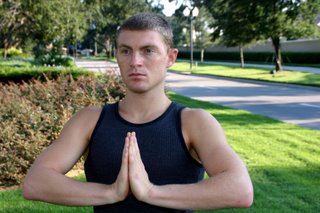 Yoga for men Guys have the world to gain by practicing yoga. So what’s holding them back?
It’s a beautiful Saturday morning and I am in, of all places, a yoga studio. While my cycling buddies set out for a ride, I waited by racks of flowery yoga clothes, then filed in for class. While my pals pedaled and, no doubt, rapped about racing, I unrolled my black mat near someone else’s pink one, beside someone else’s painted toenails and a pile of voguish flip-flops. Now, my fellow riders are probably engaged in some testosterone-fueled sprint, while I’m grunting loudly to stay balanced on my forearms. I’m inverted and self-conscious: In a class filled with women, I alone am emitting primal noises.
A world turned upside down—that’s yoga for most of us men. We still run most of the government and hit the major league home runs, but yoga is a woman’s domain. According to a 2005 Yoga Journal market study, 77 percent of the yoga practitioners in America are female. Anecdotally, longtime teachers like Anusara Yoga founder John Friend and Power Yoga instructor Baron Baptiste, who both regularly crisscross the nation hosting workshops, believe the numbers might be even more skewed. After all, only about 1 in 10 subscribers to this magazine is male. “What I find myself constantly contemplating,” says Michael Lechonczak, a yoga instructor who teaches at Equinox Fitness in Manhattan, “is how to get more guys into class.”
It’s not that we don’t know what we’re missing. Nowadays, there seems to be a yoga studio on every corner; our girlfriends and wives are walking, talking testimonies to the practice. At home, we watch them rushing out the front door, brows furrowed, only to return standing tall, with big, tranquil smiles on their faces and compassion in their eyes. Because my wife Madeleine is a yoga instructor and an avid student, I witness this stress-to-bliss transformation several times a week. When she comes home, I often mumble to myself, “Don’t I want to be that happy?” Yet I haven’t practiced yoga consistently for years.
So I asked highly qualified doctors, scientists, and veteran yoga teachers exactly why so many men stick to yoga’s sidelines. I also polled members of that rare breed known as the male practitioner—from pro athletes to busy investment managers—to find out how they came to embrace yoga. In the end, I discovered social, physical, and emotional realities that discourage men from practicing. I also heard about the moments of inspiration that got men over such barriers—and ideas about what might help other men make the leap, too. If you’re a man who’s hesitated to try yoga—or you know a man you’d like to introduce to the practice—read on.
Social Obstacles: Yoga Takes a Brave Man
Getting men to identify with yoga has long been a challenge in this country. It doesn’t matter that yoga, since its beginnings in India thousands of years ago, has mainly been taught and studied by men. Restrictive American immigration laws of the early 1900s stunted the spread of Indian culture on these shores, and only a handful of influential yogis arrived here through the decades. One such important teacher was Indra Devi. Russian born and Indian taught, she came to the United States in the 1940s and was championed by none other than celebrity cosmetologist Elizabeth Arden. That name resonated, of course, with the women who gobbled up her products, and Arden encouraged her customers to try yoga. A few years later, teacher Richard Hittleman published yoga books and landed on TV—but always had women perform the poses. Yoga’s next media celebrity was a young instructor named Lilias Folan, who began teaching asanas on public television in the 1970s. Folan had a gentle style that empowered millions of stay-at-home moms to follow right along. By the time Power Yoga emerged in the 1980s and began attracting more men, the mainstream view of the practice had, fairly or not, taken root: Yoga was for housewives.
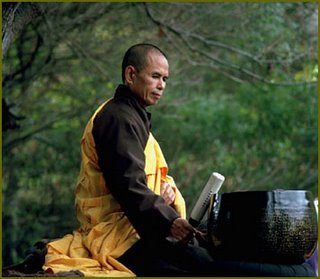 Thich Nhat Hanh Sure enough, the first thing many men notice on entering a yoga studio is that they’re in foreign territory. Pensive women readying for class sets as strong a tone as a locker room of guys snapping towels. “Men walk in needing a challenge,” says Judith Lasater, who has authored six yoga books during her 35 years as a teacher. “Women often come to the mat seeking refuge.”
The instructor can be equally alien. A female teacher might seem like just another pretty face in the intimidating crowd. A male teacher, who will likely be more humble and sensitive than your average tough-love personal trainer, may be met with disdain. “A student walks in from corporate America, and he encounters this man who exists in such a different realm,” Baptiste says. “The instructor might not be a guy’s guy.”
Lechonczak, who consulted on the book Real Men Do Yoga, sympathizes with such concerns. Before coming to the practice nearly 20 years ago, he had a consuming business career and was a weekend warrior who ran and played basketball. Lechonczak thinks more men might be willing to try yoga if they perceived it as yet another test. Albeit a unique one. “The guys coming to yoga have to be ready for the next level, be ready to let down their defenses,” he says. “They have to have heart.”
A guy’s first act of yogic bravery, Lechonczak says, is to introduce himself to the teacher. “Find out if the class is appropriate,” he advises. “Admit any fears or anxieties.”
Once the line of communication is open, a good instructor will tailor a class for individual students—male or female. Scott Achelis, a 54-year-old general contractor in Walnut Creek, California, began taking classes locally early last year because his back was tweaked from decades of construction work. The key was a positive first experience at the Yoga & Movement Center: a men’s only, one-day workshop held by studio director Diane Valentine. Her agenda? Make it fun, and let guys be guys. “It was unthreatening,” Achelis says. “We were all stretching and making off-color jokes.”
Achelis quickly became a regular in a coed class. “It’s still difficult for me when I’m partnered with a woman. I’m uncomfortable touching anybody who’s not my wife the way you have to in yoga,” he admits. But otherwise being a man among women no longer bothers him. He couldn’t care less who’s in the room, or that some very unathletic-looking females can enter poses that he can’t. “I don’t feel like I’m doing 10 percent of something being done by a woman next to me,” Achelis says. “I’m doing 100 percent of what I’m able to do.”
Physical Hurdles: Overcoming Groins and Gray Matter
Get a man past his reservations about asana time with the ladies and he’ll still have a well-founded reason to drag his feet to a studio: Yoga can be painful.
Men, it seems, are naturally tight. Boys and girls may be born equally limber, with an ability to comfortably put their feet behind their heads. But by adolescence, boys generally lose flexibility faster than girls, and as boys become men, the differences in flexibility tend to grow. Researchers have noted this gap, although they can’t specifically link it to differences in hormones, musculature, or connective tissue. “It’s hard to attribute to any one thing,” says Lynn Millar, a professor of physical therapy at Andrews University in Berrien Springs, Michigan.
Whatever is to blame, the typical man’s pursuits and lifestyle, from sitting at a desk all day to grabbing beers after a twilight softball game, put little importance on flexibility.
Lasater says stretching takes a back seat in a male’s life as early as high school. “Look at the way they stretch in football—they push on each other and bounce. It hurts,” she says. “How could anyone emerge from that with a positive view of flexibility?” Investment manager Ron Bernstein was certainly ambivalent about stretching—until his 80-hour workweeks caught up with him. Back in 1998, Bernstein, a former competitive high school golfer who’s a managing director for the investment firm Marathon Real Estate in New York City, realized that “everything hurt,” he says. “My wife was doing some yoga and suggested that stretching would be good.”
Bernstein, 37, went to a class in lower Manhattan and muddled through. “On my walk home, my back felt so much better. All those Upward and Downward Dogs really worked.”
Physical Benefits
Today a more limber Bernstein is religious about his one-day-a-week private sessions. He attributes his daily vitality and still-strong golf game to Warrior Pose variations that open his shoulders, hips, and back. “My handicap was 10 as a kid and I’m still at about 13,” he says. “Not bad for a guy who works all the time.” Elasticity also helps men who are determined to play all day. Barry Zito, the 28-year-old star pitcher who’s spent most of his career with the Oakland A’s, serves as a role model for any jock who’s determined to stay injury free. Building up muscle mass and repeating the same athletic motions day after day and year after year only adds to a body’s tightness. Which is all the more reason why Zito, who’s been in the majors since 2000, likes to brag about a statistic other than wins and losses. “I’ve never missed a start,” he says.
Zito began practicing yoga in 1998, when he heard about an off-season training program in Southern California that entwined baseball skills with yoga—”I’ve always been open to alternative forms of training,” he says—and he’s been doing asanas ever since.
Zito’s daily regimen usually includes groin and hip openers like Pigeon, Frog, and Warrior poses because “they’re kind of like the positions I find myself in when I’m pitching,” he says. Zito happily demonstrates poses to his fellow major leaguers, although in the good ol’ boy world of professional baseball, he keeps plenty to himself. “It’s too foreign for them,” he says. Zito believes, however, that such myopia may prevent players from staying in the lineup.
“Some guys aren’t willing to do the things required to keep their health,” Zito says. “I’m not judging anyone. I just know my own experience, and it’s been really, really good.”
Zito might have an even harder time spreading the gospel of yoga if men knew that, when it comes to life on the mat, their brains as well as their bodies are working against them. Science hasn’t concluded that women have higher IQs. But women can boast about their mirror neurons.
These are brain cells that receive signals from another person and trigger similar reactions in the observer. Watching someone cry, for example, might more easily cause you to cry. While mirror neurons often detect emotions, they also help an observer match posture and breathing. “You use mirror neurons to watch and imitate your yoga instructor,” says Louann Brizendine, a neuropsychiatrist at the University of California at San Francisco and the author of The Female Brain.
For men, says Brizendine, the catch is that they don’t respond as well as women to such transmitted signals. Scientists are still speculating whether women have more of such cells, or just more active ones. Either way, the neurons don’t inherently make women superior jocks, since men may have been born or raised with other athletic advantages. “But because females’ mirror neurons are more easily activated,” Brizendine says, “on average, women can mimic better than men.”
Fortunately, men can raise the performance of their mirror neurons if they consistently employ them. But until then, men enter the yoga studio at a disadvantage. New poses will be harder for them to get right. “The instructors need to be more patient with the male students,” Brizendine says. “They have to perform more demonstrations for them.”
Emotional Challenge: Try Beating Yourself
Even if a guy turns a physical corner and starts adapting to yoga’s demands, he may still miss out on many of the practice’s benefits. Yoga’s internal rewards—everything from better focus to less stress—are the hardest for men to realize.
Brizendine says that this problem, too, begins with men’s wiring. Men’s brains have a high capacity to process emotions like fear and aggression. Put an average, aggressive-feeling man on the mat, add thoughts about hostile takeovers or Shaq dunking a basketball, and you get someone who isn’t looking to quiet his mind but to let go of pent-up energy. That’s easy in traditional recreational sports, with their scores, times, and rivalries. But guys in Downward Dog may still be looking for something, or someone, to beat. “For men, physical activity—nonsexual physical activity—has always been closely associated with competition,” Brizendine says. “Studies have shown that for the last 40 years.”
Brizendine adds that with time and training, men’s brains can get past such competitive urges, and the proof lies in the men who have found enormous benefits from tapping into yoga’s more emotional offerings. Bill Gross, chief investment officer for asset management company Pimco and one of the most powerful men in his business, appreciates what 12 years of yoga has done for his head. Every morning, Gross, 62, leaves his Southern California office to gather his thoughts in a gym. Part of the workout always includes yoga. Gross loves doing Headstand. “Some of my best ideas come during Sirsasana,” he says. And, he adds, often after his routine, “a light bulb turns on, and I’m on to something.”
Away from the multiple computer screens and trading-room hubbub, Gross gets more than inspiration. The mat offers him a place to calm his nerves and breathe deeply. He returns to the office rejuvenated and relaxed, ready to work with a purpose. “Focus is a huge part of what I do,” Gross says, “and when you are trusted with nearly $700 billion of other people’s money, you’d better be focused. Because of my practice, I can sift the noise from the facts of an investment.”
Yoga can also teach a guy who’s overwhelmed by his many responsibilities that the best way to get things done is by being present—focusing on one thing at a time.
“If I go from breath to breath, I’ll find myself at the end of class,” says Zito. Similarly, when he’s playing a game, he says, “If I go hitter to hitter as opposed to letting my mind drift, I’ll suddenly be in the seventh inning.”
Men, like women, can get addicted to yoga’s emotional benefits. Mehmet Oz, a surgery professor at Columbia University who promotes holistic wellness in his book Healing from the Heart, is also a sports nut. But the doctor, who played football at Harvard and has a basketball court in his basement, sees his daily yoga practice as an escape, whether it’s from surgery or scorekeeping.
“That’s where the freedom comes in. You can let go,” he says. “You realize that the bigger game you’re playing in life isn’t about competitiveness.”
What life is about, Oz says, is awareness, equanimity, and keeping one’s ego in check—after all, the world is a bigger place than any one…man. Indeed, in topping off the list of yoga’s benefits for his male colleagues, Oz even uses the word “spirituality,” although he’s aware that some men might find that term a turnoff. “Try to get a man in contact with the spiritual element of yoga right from the start, and he’ll be lost,” he says. “He isn’t ready for that.”
Bernstein, the investment manager who has practiced yoga for seven years, admits that he still doesn’t like “chanting Om too many times and closing my eyes.” But these days Bernstein’s biggest problem concerning yoga is an inability to share his experiences with the very wife who persuaded him to try it. She abandoned yoga eight years ago. “I have no idea why Keri quit,” he says. “She just won’t do it.”
Maybe she needs a few more male practitioners to tell her what she’s missing.
Use our unique “Zen Clock” which functions as a Yoga & Meditation Timer. It features a long-resonating acoustic chime that brings your meditation or yoga session to a gradual close, preserving the environment of stillness while also acting as an effective time signal. Our Yoga Timer & Clock can be programmed to chime at the end of the meditation or yoga session or periodically throughout the session as a kind of sonic yantra. The beauty and functionality of the Zen Clock/Timer makes it a meditation tool that can actually help you “make time” for meditation in your life. Bring yourself back to balance.
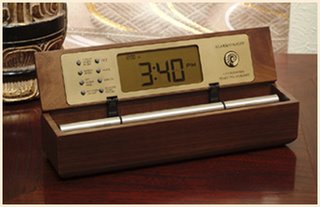 timer and gentle chime alarm clockyoga Adapted from Yoga Journal by Andrew Tilin
Now & Zen’s Yoga Timer Store
1638 Pearl Street
Boulder, CO 80302
(800) 779-6383
Posted in yoga, Yoga Timer, Yoga Timers by Now & Zen
 share your yoga practice with your children One way you can introduce yoga to your children is through a regular kids’ yoga class. But if one doesn’t fit in your family’s schedule, or the right teacher hasn’t appeared, no worries. To offer your kids a meaningful experience of yoga, all you have to do is make it a part of your home life.
Kate Holcombe, founder and president of the Healing Yoga Foundation in San Francisco, met her teacher, T.K.V. Desikachar, when she was 19. During her many years of study with him in Chennai, India, she noticed that the legendary yogi didn’t practice behind closed doors; he practiced out in the open, with his family.
So when Holcombe had her own children, she followed her teacher’s adage: “Yoga is for the living room, not the yoga room.” She invites her oldest sons (Calder, 8, and Hayes, 5) to use her body as a playground while she’s practicing asana. “They love doing my stretches with me,” she says. “When I’m in Downward Dog, they race underneath me as many times as they can before I move into Upward Dog. While I’m on my back with my legs in the air, they jump up and fly like an airplane on my feet.” Holcombe has taught Calder to do Sun Salutations, and he and Hayes like to imitate postures by her side. Sometimes, at night, when she does her asana routine in their bedroom, they watch her in the shadows and listen to the sound of her breathing as they fall asleep. Her advice for parents? “Rather than compartmentalizing ‘yoga time’ and ‘family time,’ be flexible,” she says. “Adapt your practice to your lifestyle and your children’s needs.” Her sons know that they can join their mom for postures and chanting when they’re in the mood, but it’s never required.
As you create your home routine, says Pandit Rajmani Tigunait, the spiritual head of the Himalayan Institute in Honesdale, Pennsylvania, and a longtime student of Swami Rama, it’s important to teach only what you practice. If you love vinyasa classes, show your children flowing sequences that are coordinated with the breath. If you sit for long periods of meditation, invite your child to crawl onto your lap for as long as she’s comfortable being still. If you have an altar, let your child pick flowers or draw pictures to place on it. “Let your children see that your practice makes you happy,” he says, “and let them follow you.”
With positive role modeling and regular firsthand experience, he says, your kids will begin to see that yoga—in all its myriad forms—is good for their health, happiness, and spiritual development. And as they mature, they may be inspired to study in a more structured manner.
adapted from Yoga Journal by By Shannon Sexton
 Meditation and Yoga timers and tools Now & Zen
1638 Pearl Street
Boulder, CO 80302
(800) 779-6383
Posted in yoga, Yoga Timer, Yoga Timers by Now & Zen
 Hugging Meditation At a recent lecture, I led a group of interfaith seminarians in the contemplation of the Five Remembrances, Buddha’s teaching on impermanence, aging, health, change, and death. Afterward, one of the students asked, “Isn’t this just negative thinking?” On the contrary, the Five Remembrances is what the Buddha offers to awaken you from denial, to cultivate gratitude and appreciation for the life you’ve been given, and to teach you about nonattachment and equanimity.
Another way of practicing the Five Remembrances is through something Buddhist master Thich Nhat Hanh calls hugging meditation. When your partner or children leave for work or school, hug each other for three full breaths, and remind yourself of the Fourth Remembrance: “All that is dear to me and everyone I love are of the nature to change. There is no way to escape being separated from them.” If you’re having a disagreement with someone, remind yourself, before getting swept away by heated emotions, of the Fifth Remembrance: “My actions are my only true belongings. I cannot escape the consequences of my actions. My actions are the ground upon which I stand.” None of this means you should be passive or reluctant to advocate your views. Instead the meditation helps you respond more skillfully with awareness of how things truly are rather than from conditioned reactions.
adapted from Yoga Journal by Frank Jude Boccio
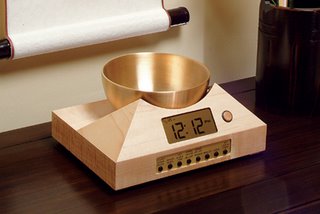 tibetan bowl alarm clocks and timers for meditation and yoga
Now & Zen
1638 Pearl Street
Boulder, CO 80302
(800) 779-6383
Posted in yoga, Yoga Timer, Yoga Timers by Now & Zen
 meditation for children Our students in the post-pubertal stage of adolescence can engage in more classical forms of meditation. We can teach them techniques that further support their mental development, for example, so that they can stay relaxed and able to concentrate during these most important learning years.
Again, one of the best practices to teach is yoga nidra. This time we can use the adult form, rotating the awareness through the body parts and then taking awareness deeper into the breath and mind.
Visualization techniques are wonderful for this age group, and techniques that develop memory and mental power are particularly useful. For example, we can ask a child to visualize an imaginary blackboard and ask them to see themselves writing the letters of the alphabet on this board in colored chalk. Or in this day and age, to visualize a computer screen and see themselves creating their own computer game, following their hero through any story they want to create.
Breath meditations are useful for helping students who are at home studying. It is important for students to remain relaxed and receptive, and to take regular productive and relaxing breaks from study. They can, if they wish, use that time to mentally review their work.
By Swami Shankardev Saraswati, Ph.D
 meditation timers and alarm clocks with chimes
Now & Zen
1638 Pearl Street
Boulder, CO 80302
(800) 779-6383
Posted in yoga, Yoga Timer, Yoga Timers by Now & Zen
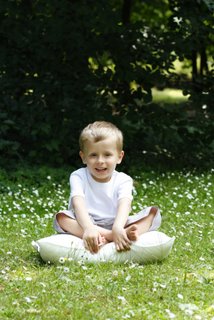 meditation for children By the age of eight, a child’s fundamental personality has formed and his or her body begins a process of preparing for puberty. Changes begin to occur in children’s brains around the age of eight, and these changes reach a peak during puberty. When we teach meditation to this age group, our main aim is to support balanced physical and mental development. This helps the child be better mentally prepared for the onslaught of feelings, desires, and urges that arise during puberty. It also supports the child’s ability to take in knowledge at school, and to develop a relaxed focus and good memory.
Eight-year-olds in India learn three practices to foster total physical, mental, and spiritual development. These are Sun Salutation for the body, alternate nostril breathing for the brain and mind, and mantras for the deeper mind and spirit. These practices can slow the onset of puberty and balance its effects by acting on the subtle channels that flow in the spine. Mental development then has time to catch up to physical changes.
Yogic physiology explains how this occurs. A child’s physical changes during puberty are under the control of pingala nadi, the spinal channel that carries prana, the life force. Mental development occurs under the control of ida nadi, the spinal channel that carries psychological force. Excessive stimulation of the physical channel alone, as tends to occur in the normal social environment, causes imbalanced development and can make puberty a rough process. The yogic practices taught children at this time stimulate both channels equally, to stimulate physical and mental growth at the same time.
The practice of Sun Salutation balances the life force, prana, preventing it from becoming jammed up in the sexual centers (swadhisthana chakra). One note of caution is to teach children only asanas that are playful and that do not put too much pressure on the endocrine system. Never hold the major poses for extended periods, as they will overstimulate the physical systems and can cause imbalanced development.
Alternate nostril breathing is a pre-meditative practice that balances the flow of energy in both ida and pingala. This pranayama directly affects the physical and mental systems by balancing both sides of the brain. Do not teach breath retention to children. Simply get them to observe the flow of the breath in on one side and out on the other, alternating sides. This will calm and balance them.
Mantras are the main meditative practices taught to this age group, as they powerfully affect the brain and its development. The main mantra taught is the Gayatri mantra. This mantra has 24 syllables, each of which stimulates a different part of the brain. Gayatri is the mantra to stimulate our intelligence.
All of the practices listed above, including yoga nidra as detailed for younger children, will support a child’s ability to learn, to take in and digest information at school, and to develop individual interests.
adapted from Yoga Journal by Swami Shankardev Saraswati, Ph.D.
 Maple Meditation Timer with Chime Now & Zen
1638 Pearl Street
Boulder, CO 80302
(800) 779-6383
Posted in yoga, Yoga Timer, Yoga Timers by Now & Zen
 teaching meditation to children From the point of view of yogic physiology, children below age eight do not need much formal meditation training. It is more important for these children that their parents learn yoga and meditation and carry yogic principles into their homes. Children absorb the energy of the environment. If their parents practice some form of self-development, their children will grow up in a healthier, more relaxed and aware environment.
Parents need to practice meditation techniques that increase their own capacity for awareness in the midst of their busy lives, so that they can be more present and available to their children. The child needs to know that a parent is really interested in them, is really listening to and attending to them. At the same time, parents need to learn how to allow children to be themselves and to foster each child’s own unique being and abilities.
One meditation technique can be used with children in this age group, however. A modified practice of yoga nidra is a deep relaxation practice in the Corpse Pose (Savasana). In this practice we cannot ask the children to feel individual parts of the body, but rather we work with awareness of larger parts. For example, we may playfully instruct the child in body awareness by saying, “Feel that you are a statute until I count to 10. Now bend your elbows and now straighten your arms.” We give similar instructions with the legs and may ask them to wiggle their toes, and so on. This takes their awareness through the body.
Once children have developed a little body awareness, we can teach them to listen to and follow outside sounds, or to visualize imaginary realms, or we can read stories that stimulate their imaginations.
adapted from Yoga Journal, by Swami Shankardev Saraswati, Ph.D
Use our unique “Zen Clock” which functions as a Yoga Timer. It features a long-resonating acoustic chime that brings your meditation or yoga session to a gradual close, preserving the environment of stillness while also acting as an effective time signal. Our Yoga Timer & Clock can be programmed to chime at the end of the meditation or yoga session or periodically throughout the session as a kind of sonic yantra. The beauty and functionality of the Zen Clock/Timer makes it a meditation tool that can actually help you “make time” for meditation in your life. Bring yourself back to balance.
 yoga & meditation supplies, timers and clocks Now & Zen – The Yoga Timer Store
1638 Pearl Street
Boulder, CO 80302
(800) 779-6383
Posted in yoga, Yoga Timer, Yoga Timers by Now & Zen
 teaching meditation to kids When we teach meditation to children, we need to choose age-appropriate techniques that foster their total growth and development. The word “meditation” is an English term for a wide range of practices and techniques. Meditations for children cannot be the same as those taught to middle-aged business people or spiritual aspirants seeking higher knowledge. Rather, in this context, meditation is a process that supports the growth of the body-mind of the child, fosters the development of each child’s own unique personality, and supports creativity and expression.
Meditation techniques for children can help them relax and focus better during school, so that they can concentrate and memorize more effectively. From the spiritual perspective, good meditation techniques teach children self-awareness, encourage them to be themselves, and help them face life with greater belief in their potential.
adapted from Yoga Journal by Swami Shankardev Saraswati, Ph.D
 meditation supplies, timers and clocks Now & Zen
1638 Pearl Street
Boulder, CO 80302
(800) 779-6383
Posted in yoga, Yoga Timer, Yoga Timers by Now & Zen
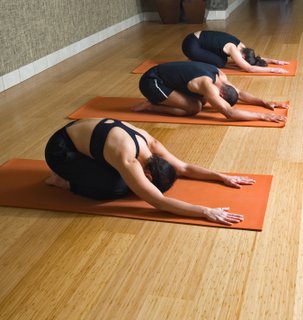 yoga A clinical trial by the Yoga Research Institute in Hyderabad, India, followed the effects of intensive yoga training on physiological changes in six healthy adult females. Though the study group was small, the intensive yoga training resulted in participants’ ability to exercise more comfortably, with a significantly lower heart rate, and with increased breathing efficiency, according to an abstract published in the Journal of Alternative and Complementary Medicine in 1997.
adapted from Yoga Journal by Elaine Lipson
Use our unique “Zen Clock” which functions as a Yoga Timer. It features a long-resonating acoustic chime that brings your meditation or yoga session to a gradual close, preserving the environment of stillness while also acting as an effective time signal. Our Yoga Timer & Clock can be programmed to chime at the end of the meditation or yoga session or periodically throughout the session as a kind of sonic yantra. The beauty and functionality of the Zen Clock/Timer makes it a meditation tool that can actually help you “make time” for meditation in your life. Bring yourself back to balance.
 yoga timers and alarm clocks with acoustic chimes Now & Zen – The Yoga Timer Store
1638 Pearl Street
Boulder, CO 80302
(800) 779-6383
Posted in yoga, Yoga Timer, Yoga Timers by Now & Zen
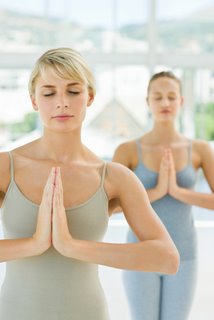 yoga benefits Scientists and medical doctors pursuing yoga-related research are focusing on its ability to help prevent, heal, or alleviate specific conditions, such as heart disease, high blood pressure, carpal tunnel syndrome, asthma, diabetes, and symptoms of menopause, and its benefits as a technique for relieving stress and coping with chronic conditions or disabilities. In fact, the NCCAM itself, identifying yoga as a therapy worth pursuing in the research arena, says that, “During the past 80 years, health professionals in India and the West have begun to investigate the therapeutic potential of yoga. To date, thousands of research studies have been undertaken and have shown that with the practice of yoga a person can, indeed, learn to control such physiologic parameters as blood pressure, heart rate, respiratory function, metabolic rate, skin resistance, brain waves, body temperature, and many other bodily functions.” Though it’s difficult to find most of these studies, some current, accessible research reports significant results for challenging medical conditions:
Asthma. At the Northern Colorado Allergy Asthma Clinic in Fort Collins, a controlled clinical study of university students (19 to 52 years old) with asthma concluded that yoga techniques seem beneficial as an adjunct to the medical management of asthma, according to the 1998 published abstract. Using a set of asanas, pranayama, and meditation, the yoga group practiced three times a week for 16 weeks. Though pulmonary functions did not show a significant variance between yoga and control groups, “analysis of the data showed that the subjects in the yoga group reported a significant degree of relaxation, positive attitude, and better yoga exercise tolerance. There was also a tendency toward lesser usage of beta adrenergic inhalers.”
Cardiovascular Risk Factors. A three-month residential study treating patients with yoga, meditation, and a vegetarian diet at Hanover Medical University in Germany found a substantial reduction in risk factors for heart disease (including blood pressure and cholesterol) in participants, according to an abstract published in Acta physiologica Scandinavica Supplementum in 1997.
Carpal Tunnel Syndrome. A randomized, single-blind, controlled clinical trial at the University of Pennsylvania School of Medicine in Philadelphia concluded, “In this preliminary study, a yoga-based regimen was more effective than wrist splinting or no treatment in relieving some symptoms and signs of carpal tunnel syndrome.” The study, published in the Journal of the American Medical Association in 1998, also noted that “Subjects in the yoga groups had significant improvement in grip strength and pain reduction, but changes in grip strength and pain were not significant for control subjects.”
Arthritis. Also at the University of Pennsylvania School of Medicine, a yoga-treated group with osteoarthritis of the hands improved significantly more than the control group in “pain during activity, tenderness, and finger range of motion.” The randomized controlled clinical trial, published in the Journal of Rheumatology in 1994, concluded, “This yoga-derived program was effective in providing relief in hand osteoarthritis. Further studies are needed to compare this with other treatments and to examine long-term effects.”
adapted from Yoga Journal by Elaine Lipson
 Alarm Clocks and Timers with Gentle Chimes
Now & Zen
1638 Pearl Street
Boulder, CO 80302
(800) 779-6383
Posted in yoga, Yoga Timer, Yoga Timers by Now & Zen
 be of service Commit to one selfless act each week. You’ll be surprised at how even a simple act like offering your seat on a crowded bus can foster a sense of connection and a respect for the welfare of others. Bring a meal to a busy friend; babysit your neighbors’ kids; give a few hours to a community garden. These moments are a chance to share someone else;s experience of the world and see the richness of your own existence. “All yoga begins with karma yoga, which is action done as a service to others and as a form of worship of the divine,” writes David Frawley in Yoga: The Greater Tradition.
adapted from Yoga Journal by Charity Ferreira
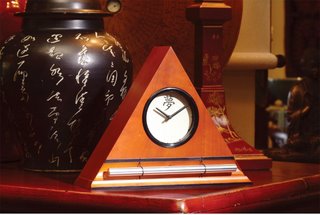 zen clocks and meditation timers
Now & Zen
1638 Pearl Street
Boulder, CO 80302
(800) 779-6383
Posted in yoga, Yoga Timer, Yoga Timers by Now & Zen
« Previous Page — « Previous Entries
Next Entries » — Next Page »
|
|
|
|